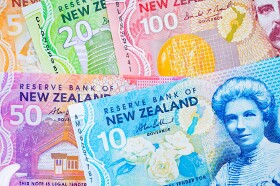The New Zealand dollar fell yesterday and extended its decline today. New Zealand’s traded surplus unexpectedly shrank in March, adding to the negative market sentiment that sent the nation’s currency down.
New Zealand exports declined NZ$400 million in March compared to the same period a year ago, while import rose NZ$48 million, resulting in a trade surplus of NZ$134 million. That is compared to the February surplus of NZ$202 million and the expected figure of NZ$437 million.
On more positive note, the business confidence index rose from 33.8 in March to 35.8 in April. The Reserve Bank of New Zealand left its main interest rate unchanged at 2.5 percent on April 26. Reserve Bank Governor Alan Bollard was rather hawkish in his statement after the decision:
The domestic economy is showing signs of recovery. Housing market activity continues to increase and a recovery in building activity appears to be underway, as forecast. That recovery will strengthen as repairs and reconstruction in Canterbury pick up later in the year.
He noted though, that the global economic environment is less favorable. Bollard also spoke about the high exchange rate of the New Zealand currency, hinting that the central bank may change the monetary policy to weaken the kiwi.
NZD/USD was down from 0.8183 to 0.8175 and NZD/JPY was at 65.23 as of 2:53 GMT today after it opened at 65.28. EUR/NZD rose from 1.6164 to 1.6193.
If you have any questions, comments or opinions regarding the New Zealand Dollar,
feel free to post them using the commentary form below.
